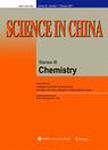SUBCELLULAR SITE OF ANTISPERMATOGENIC EFFECT OF GOSSYPOL AND ITS POSSIBLE MOLECULAR MECHANISM OF ACTION
SUBCELLULAR SITE OF ANTISPERMATOGENIC EFFECT OF GOSSYPOL AND ITS POSSIBLE MOLECULAR MECHANISM OF ACTION作者机构:Chinese Academy of Medical Sciences Beijing Department of Cell Biology Institute of Basic Medical Research
出 版 物:《Science China Chemistry》 (中国科学:化学(英文版))
年 卷 期:1983年第26卷第6期
页 面:614-633页
基 金:This work was supported in part by grant from the Population Division of the Rockefeller Foundation U.S.A
主 题:SUBCELLULAR SITE OF ANTISPERMATOGENIC EFFECT OF GOSSYPOL AND ITS POSSIBLE MOLECULAR MECHANISM OF ACTION SITE
摘 要:This paper reports the results of gossypol effects on the testicular mitochondrial ultrastructures and functions. A hypothesis of mechanism of gossypol action based on our experimental data was *** microscopic observations confirmed further our previous studies that the mitoehondria of the target germ cells were the most sensitive and the most severely damaged among cellular organelles in response to gossypol. The damages included the swelling, vacuolation, crista depletion, lysis, granular accumulation in matrix and the process of intact mitochondria disintegration. The activity of the mitochondrial marker enzyme, the LDH-X of human spermatozoa, was markedly decreased or suppressed completely after gossypol *** functions of isolated testieular mitochondria determined by Warburg manometric and oxygen electrode polarographic methods indicated that gossypol stimulated respiration but inhibited slightly the oxidative phosphorylation at low concentrations (20-40μM) in vitro. With



